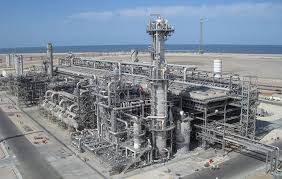The oil and gas industries have gone from strength to strength over the past ten years thanks to economic reform policies to bring the sector out of the red.
More pipelines
A network comprising 2,700 kilometres of oil- and gas pilpelines has been laid at a cost of LE28 billion. Many of the new gas pipelines feed the New Administrative Capital and New el-Alamein City.
Natural gas is supplied to the nation through an additional 750 kilometres costing LE7.5 billion through the Sulaymaniyah-North Giza line, the Fayoum expansion lines under the presidential rural development initiative Decent Life, a pipeline across Sinai, and a connection with the Dahshour compressor units.
Petroleum port development
The ministry is overseeing the development of oil ports, taking into account the aspects of health and safety and environmental concerns, with the long-term view of making Egypt a regional hub for trading and circulating oil and gas. The most important ports that have undergone development are Sumed and Sonker at Ain Sokhna, Gouna Petroluem Basin in Alexandria, the MIDTAP Pier in Dekheila Port, and Al-Hamra Port in new el-Alamein City.
Ship bunkering
Efforts are underway to make this country a ship bunkering centre, thanks to the Suez Canal, Egypt’s geographic location on the Red and Mediterranean, infrastructure development and skilled human resources. Bunker supply licences have been issued for the Geneva-headquartered Minerva Bunkering and Dublin-based Peninsula. The two companies were selected through a global tender by the ministry, the Suez Canal Authority, and the Suez Canal Economic Zone (SCZone).
Warehousing and storage
Eighty-one warehouses costing LE35.7 billion have been built to provide an additional storage capacity of 5 million tons. Among them are the butane storage warehouses in Sohag and Alexandria for local supplies, avoiding shortages at peak times. SUMED Company has a new jetty for petroleum products, Badr City now has an oil storage facility, the Sonker bulk-liquids terminal in Ain Sokhna, and crude oil storage depots Agroud, Ras Ghareb, Ras Badran and Ras Shuqair are additions to the list of storage facilities. Al-Hamra Petroleum Port area at WEPCO has been expanded to increase shipping capacity to one million barrels of crude per day and four tanks with a capacity of 630,000 barrels of crude each, making total storage to 5.3 million barrels.
Securing local supplies
Government action to develop fuel infrastructure and energy support systems has helped secure energy resources for daily consumption and national projects.
Local market for oil and gas currently stands at 692 million tons.
Boom in fuel trading and distribution services locally
Trade and distribution of all types of fuel locally have boomed, particularly with regard to the safe handling of butane gas cylinders without the worry of shortages.
However, butane gas is on the decline as more households are connected to the gas supply system. Consequently, butane consumption was down 17 per cent in fiscal year 2022-202 compared to FY2015/2016.

Maintaining butane supply
In the meantime, millions of homes still rely on butane for cooking. In order to keep pace with demand, more ports handle butane — Wadi Ferran, the MIDTAP jetty at Dekheila, Damietta, Sumed and Sonker in Ain Sokhna to receive butane tankers. Storage capacity was increased from 78,000 tons in 2014 to 220,000 tons at the end of June 2022. More distribution centres have been set up nationwide and in the new urban cities, bringing the total to 3,093. Local trade and distribution are monitored electronically covering the nation, plus a GPS tracking system for tankers and the automatic tank gauging system (ATG) at filling stations.






Discussion about this post